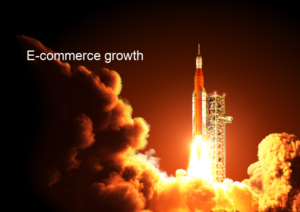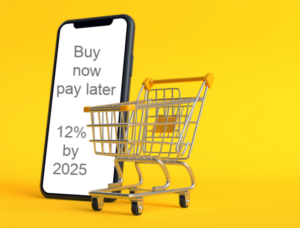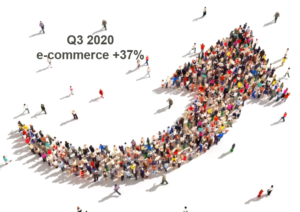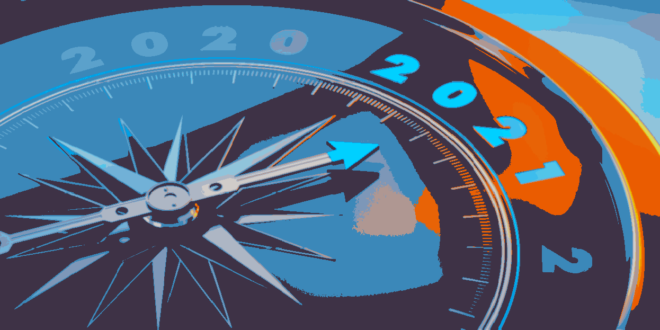By Stefan Merz, Chief Operating Officer at PPRO, Jan 12, 2021
It has been a year of momentous change for the payments industry. Previously, emerging trends have seen a massive acceleration as a result of the pandemic. Years of transformation happened in just a few months with rapid shifts in consumer behaviors and merchant expectations for e-commerce.
For instance, cash usage waned even further this year amid fears around the pandemic, leading to a coin shortage across the country. Many merchants pointed consumers to digital payments if they lacked exact change. According to McKinsey’s 2020 Global Payments Report, by the end of 2020, a drop of four to five percentage points in the share of global cash transactions was expected.

While awful, the pandemic has been rocket fuel for digital transformation, providing the payments industry an opportunity to innovate. For example, this year, online payments via bank transfer have continued to proliferate, while installment schemes have been named one of the fastest growing online payment methods worldwide.
So, after a year of such rapid transformation, what can we expect to see in 2021? And how will permanently altered consumer behaviors shape online payment preferences?
Installment payments are changing mindsets on credit
It’s safe to say local payment methods, nontraditional payments such as bank transfers, e-wallets, cash-based digital payments, and local credit cards have seen huge growth over the last couple of years. They are now the dominant payment methods globally, used in more than 70% of all online transactions. Local payment methods (LPMs) continue to play a key role in accelerating digital adoption, particularly in emerging regions. In China, for example, LPMs generated $43 billion in revenue in 2019.
In 2020, consumers were more inclined than ever to try different payment methods searching for greater convenience and heightened security during national lockdowns. According to Paysafe’s LiT research, 56% of global consumers mentioned that they used a new local payment method in the first month of the pandemic.

The payment method that has taken the world by storm is the interest-free ‘buy now pay later’ (BNPL) concept, with payment providers such as Klarna, Afterpay, and Affirm leading the charge. Over this past holiday shopping rush, 44% of US consumers mentioned the availability of buy now, pay later is very important in determining how much they spend with retailers. Over the Black Friday weekend, Afterpay saw a 186% increase in sales, while Klarna processed an astonishing five times more transactions than in the first four years of their operation combined.
Research from Kaleido predicts that BNPL value will reach over 12% of total global e-commerce spend on physical goods by 2025, showcasing this trend’s staying power.
Ongoing furlough measures and job losses have seen consumers face unprecedented financial strain this year, resulting in a reliance on ‘pay later’ schemes over traditional payment methods due to their flexible nature and lack of financial penalties. With the economy not expected to recover to pre-COVID-19 levels for some time, this is a trend we see continuing in 2021. As such, this is certainly a payment method online merchants need to offer now.
Staying competitive in an increasingly digital age will be harder
It’s no surprise that the figures from 2020 reflect a massive boom for global e-commerce. The ‘quickening’ effect, as coined by McKinsey, describes a 10-year shift in e-commerce experienced in just 90 days. During June 2020, at the height of the strictest lockdowns in many countries, e-commerce sales grew 34% year-on-year – the highest growth rate reported since March 2008. And consumers were not just turning to their trusted brands during this critical period. Many shoppers branched out to new retailers.
Disruptions in brand loyalty have created a wealth of opportunities for businesses big and small, pushing them to take their operations online and across borders. Facebook even launched its own shopping feature to enable growing businesses to sell to customers.

E-commerce is now king as US online sales have jumped 37% in Q3 alone, while experts predict Amazon will have earned 42 cents of every dollar spent this holiday season. This digital surge will continue to proliferate as shoppers turn to online channels even after the lockdown restrictions start to lift. In 2021, it won’t be enough for merchants to only support card transactions online if they want to stand out in a crowded market.
According to PPRO’s own research, 42% of US consumers will abandon their baskets if their preferred payment method is not available at checkout. Recent findings reveal that cart abandonment’s global average rate is as high as 75.6% – causing brands to lose up to $24 billion a year in revenue in the UK alone. We expect this demand to continue, putting pressure on retailers to expand current payment offerings.
Payments should prepare for hypergrowth
Rather than an evolution, the pandemic has been a revolution. It’s turbocharged digital payments and changed customer expectations and behaviors overnight.
More and more customers are now online, looking for products or services that suit their specific needs. A shopper might look across borders for what they want: better-quality products, more payment methods accepted, stronger brand loyalty, and more. Merchants could reach untapped markets by offering the right mix of goods, user experience (UX), local payment methods, and delivery options.
With over 500 significant local payment methods across the globe, each country will have different payment preferences. To scale up and succeed in the new normal, merchants must work with payment service providers to activate as many payment methods as possible at the checkout page.
2020 has seen a huge change in consumer payment preferences, but 2021 will be all about addressing these changes and seizing the opportunities that emerge. Merchants must get ready now or else risk losing out to the competition.
While 2021 will certainly be another challenging year for the economy, the future for local payment methods (and savvy retailers who offer them) will certainly be very bright.

Stefan Merz is Chief Operating Officer at PPRO, where he leads operational and organizational expansion. He joined PPRO in November 2018 and is responsible for company strategy and translating that strategy into action, working closely with PPRO CEO Simon Black and the firm’s international offices. Before that, he held senior positions at Siemens and HP Enterprises in the US, where he gained wide-ranging experience implementing business transformations. He also served as Chief Strategy Officer for Diebold Nixdorf, where he managed acquisitions and divestitures.
Related PaymentsNEXT coverage:
Pandemic pushes dynamic e-commerce growth ahead in SE Asia
Will cash crash or make a comeback post-pandemic?








LET’S CONNECT